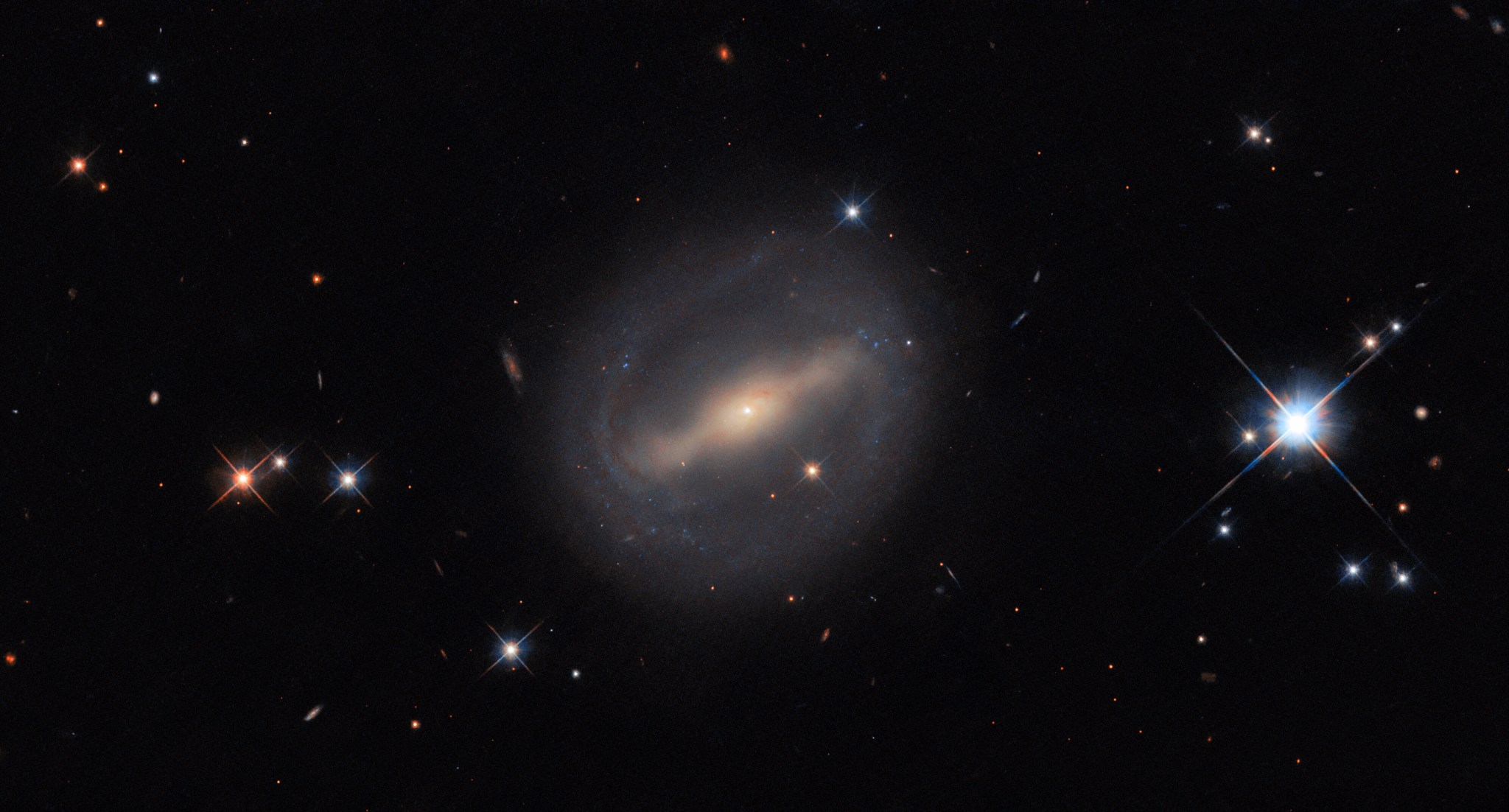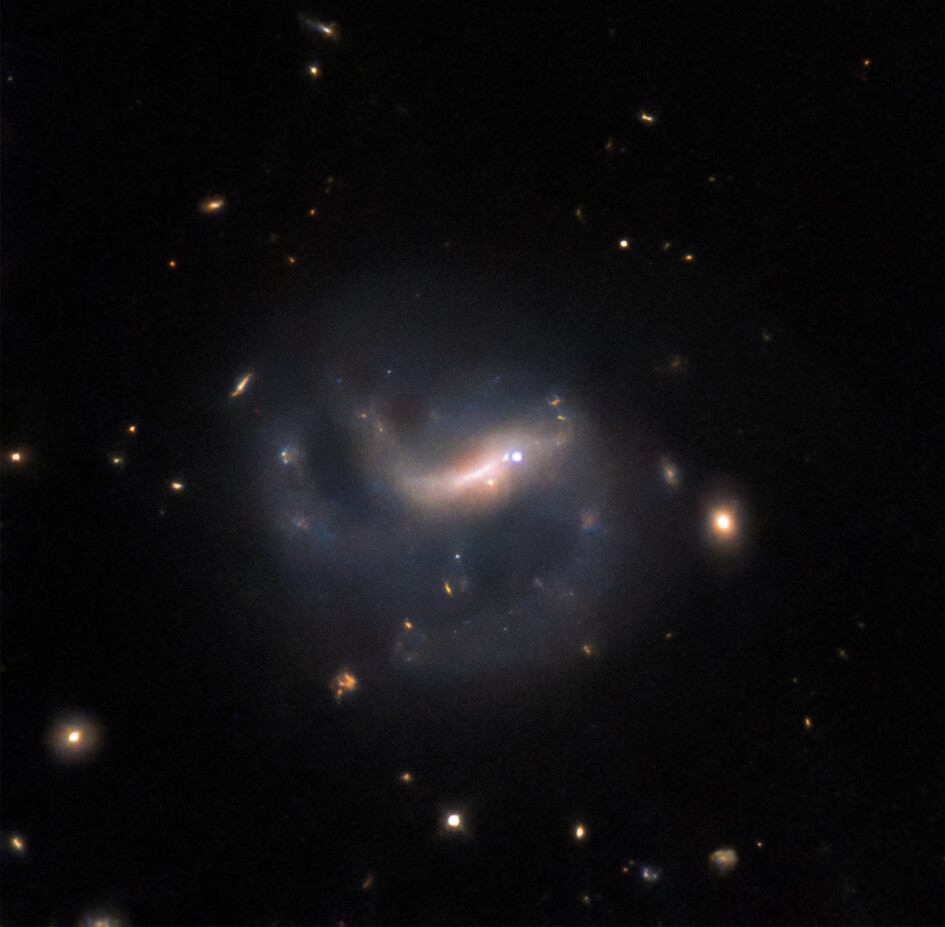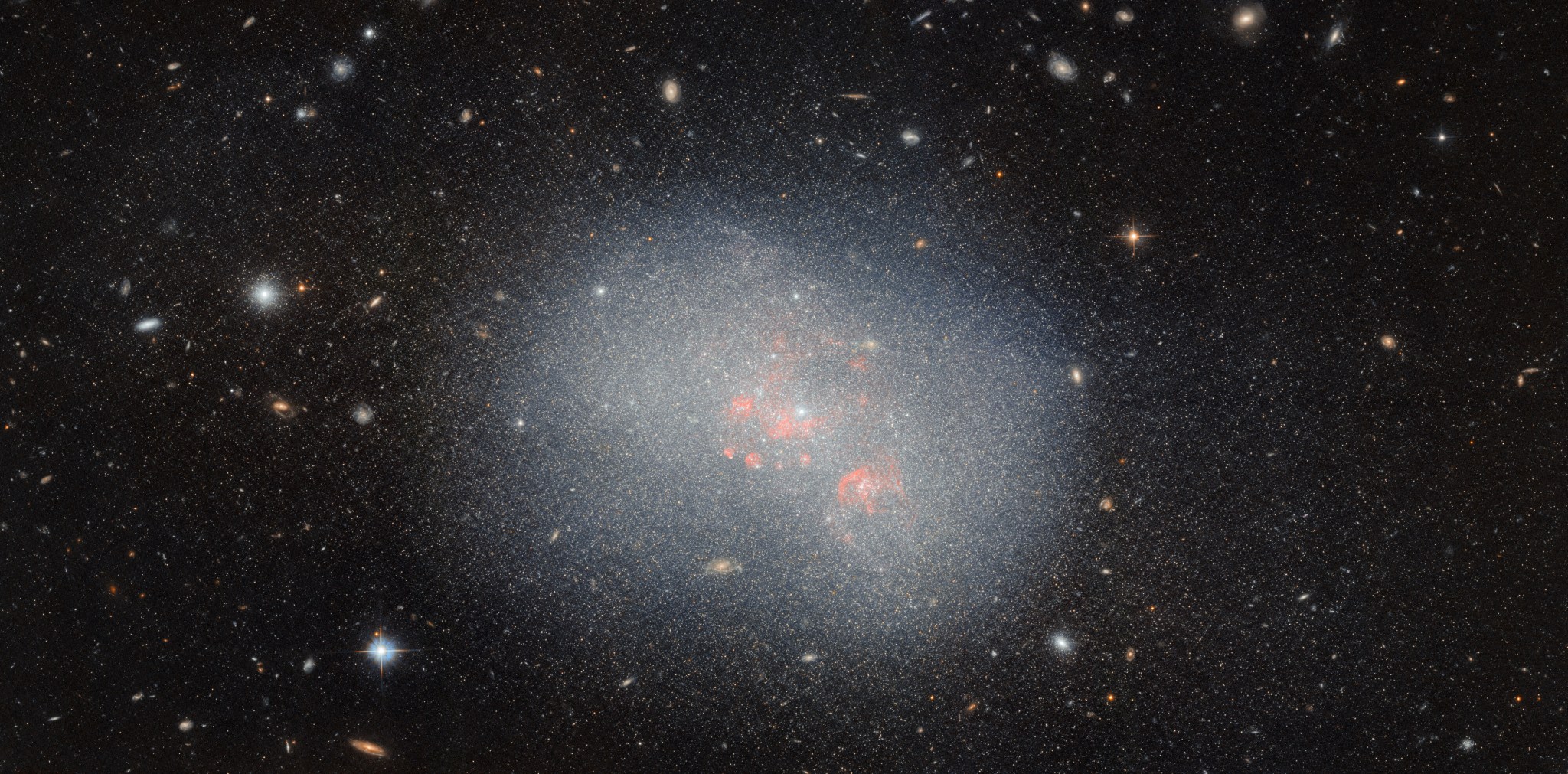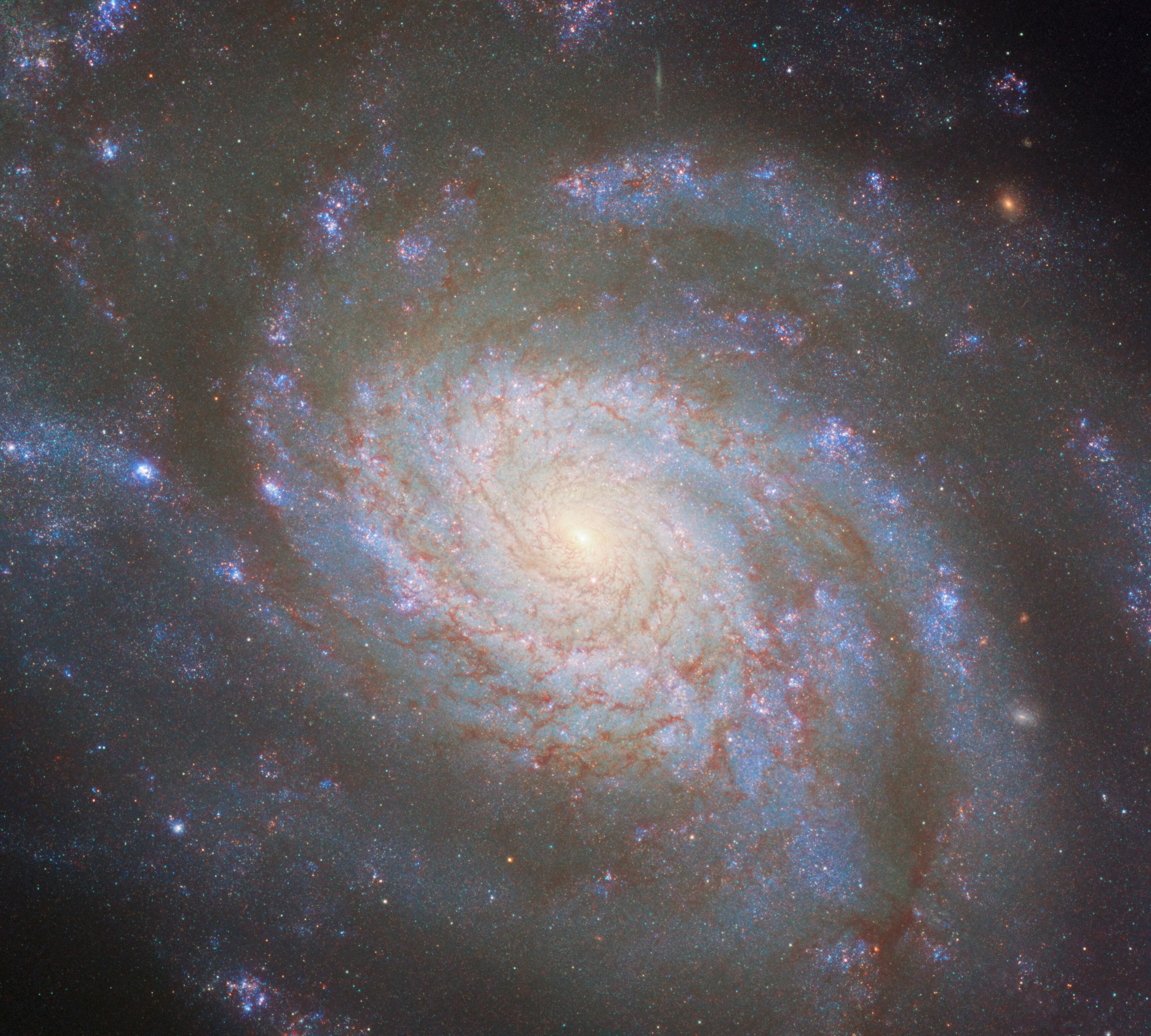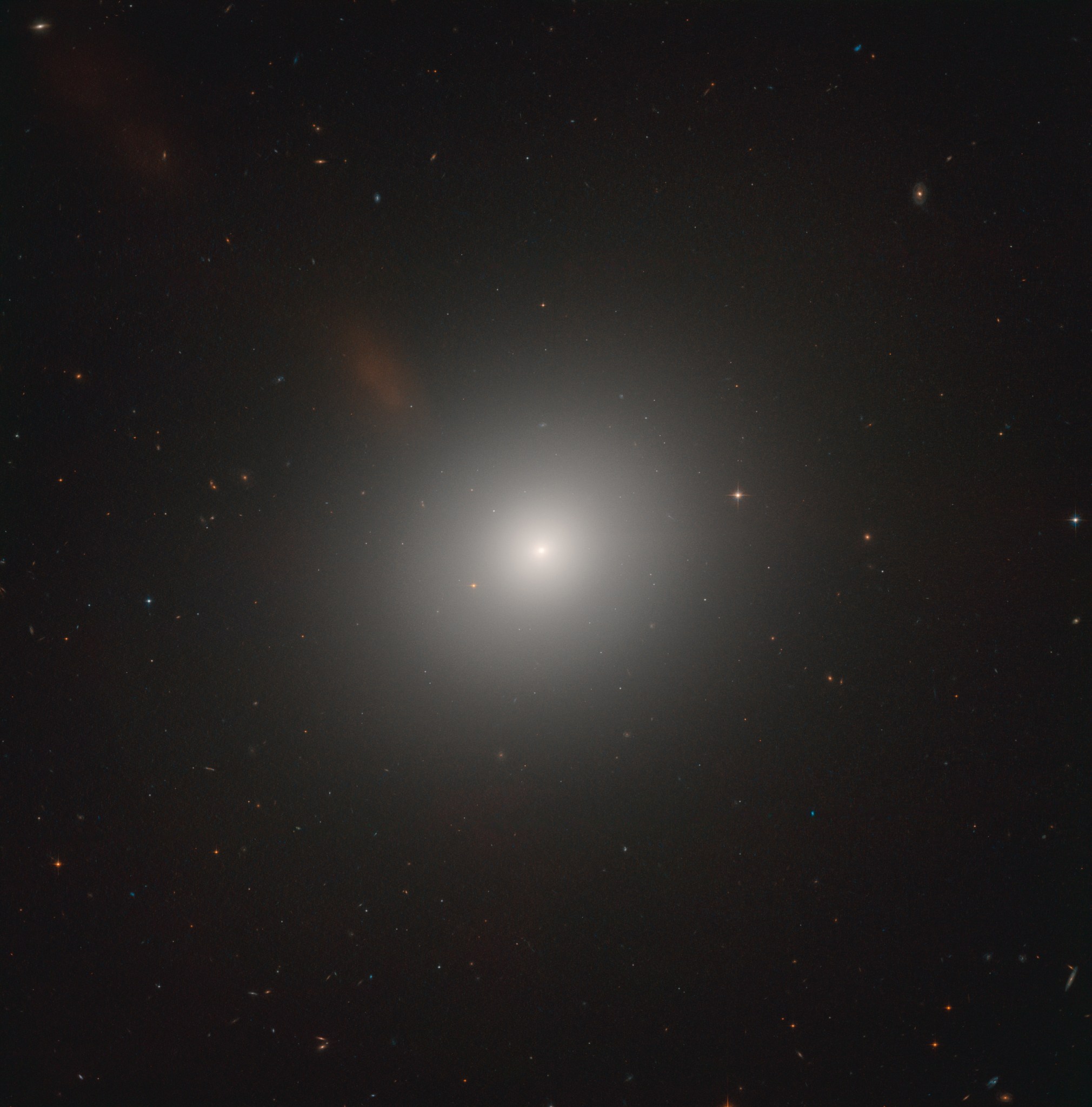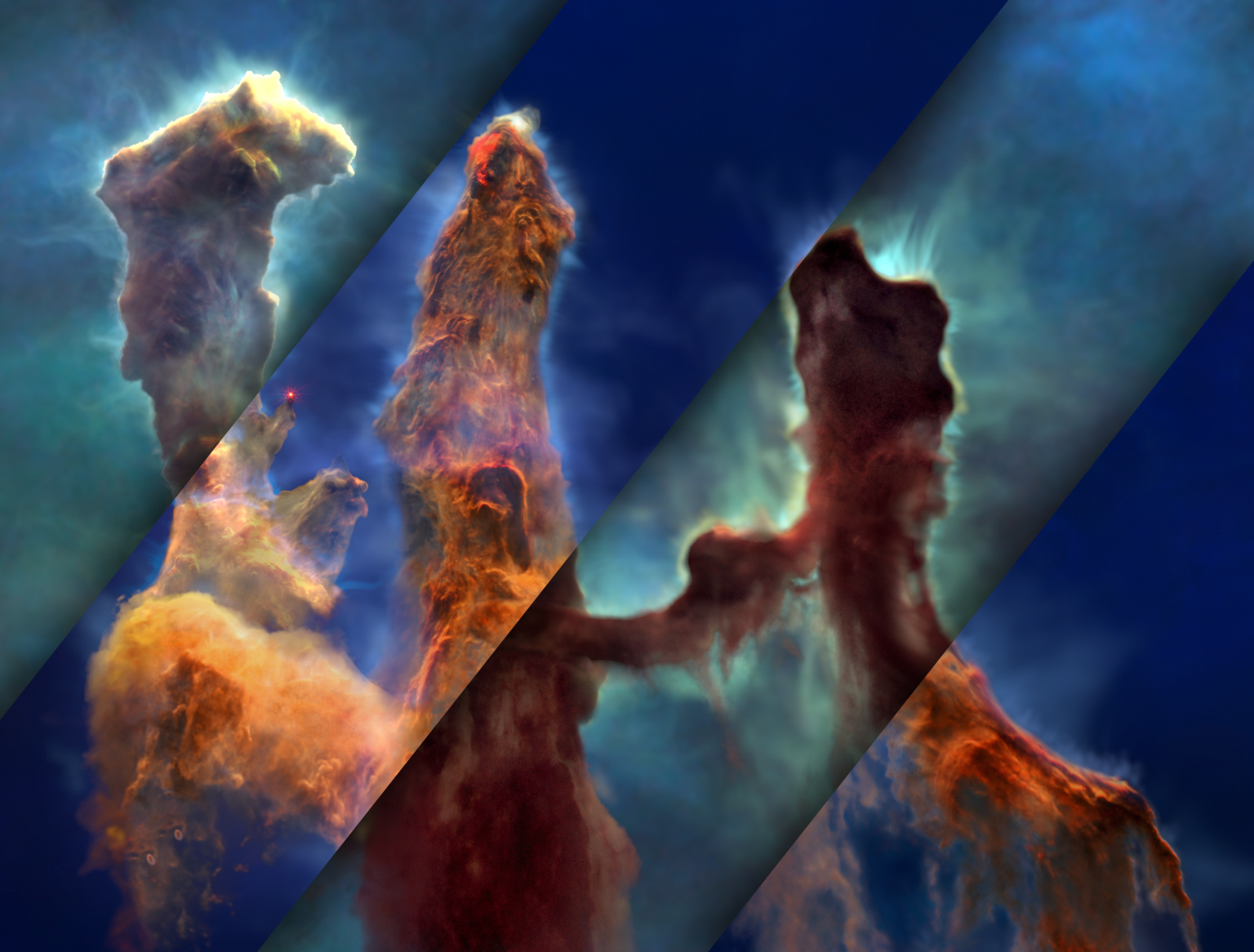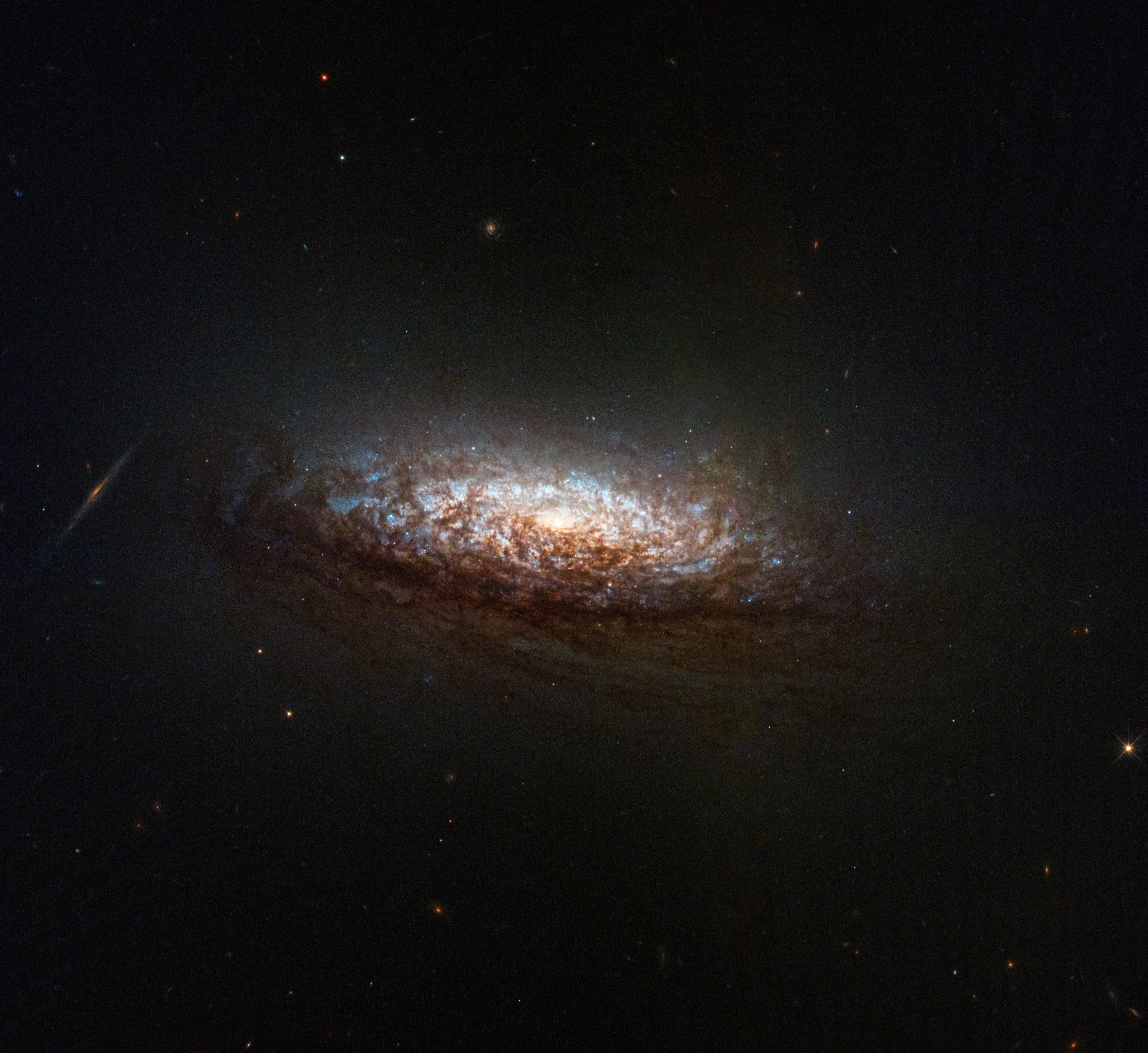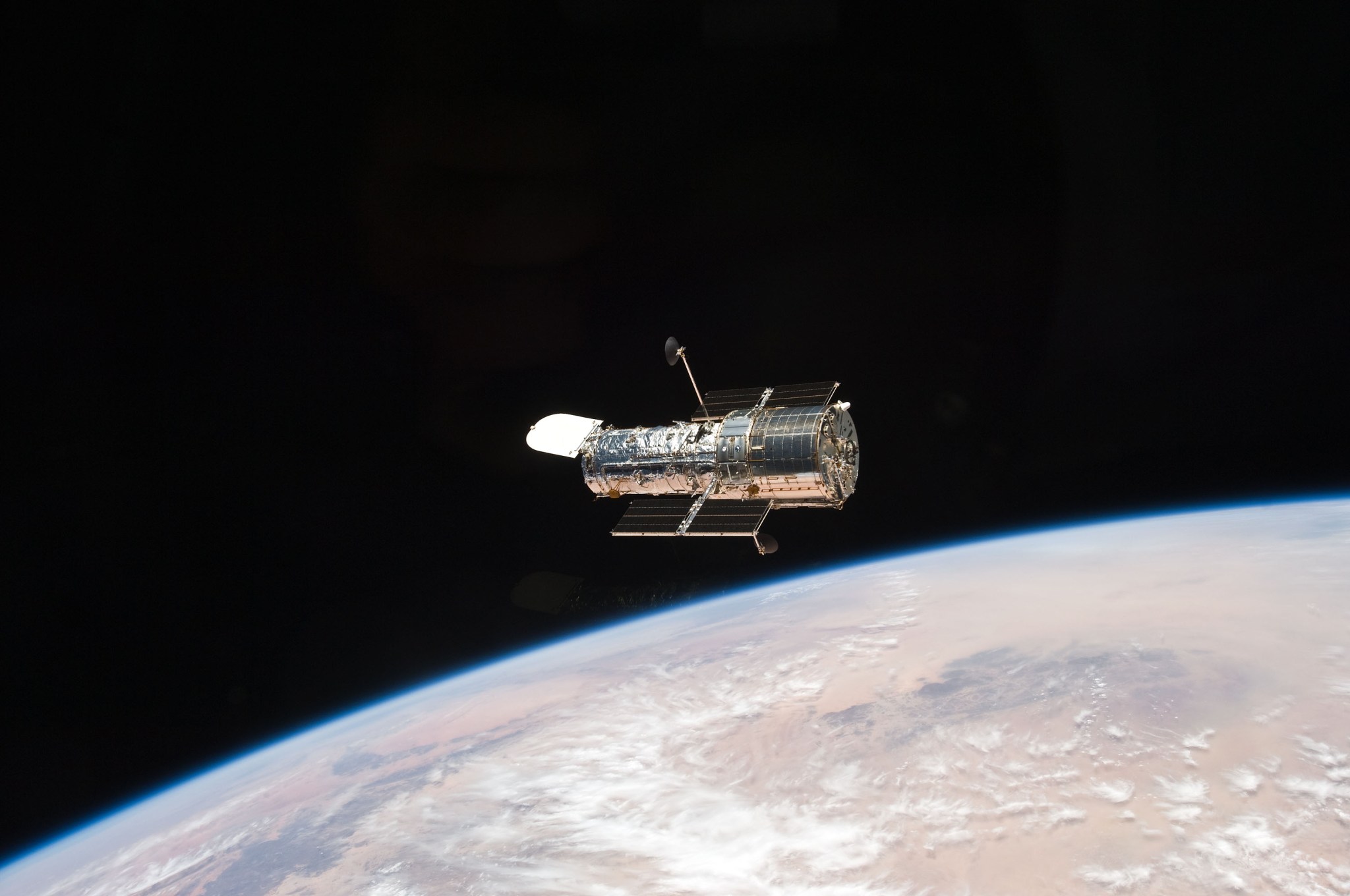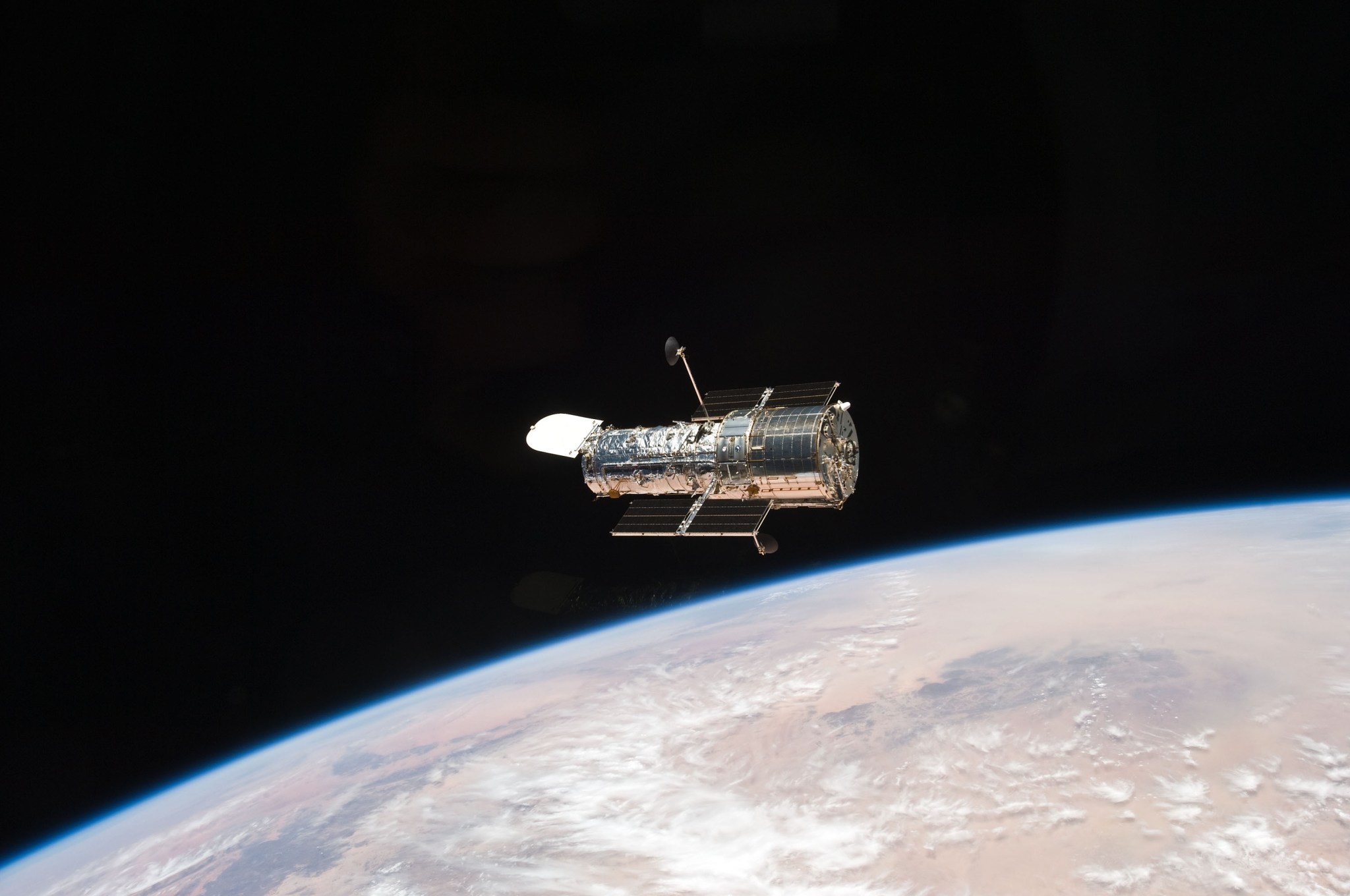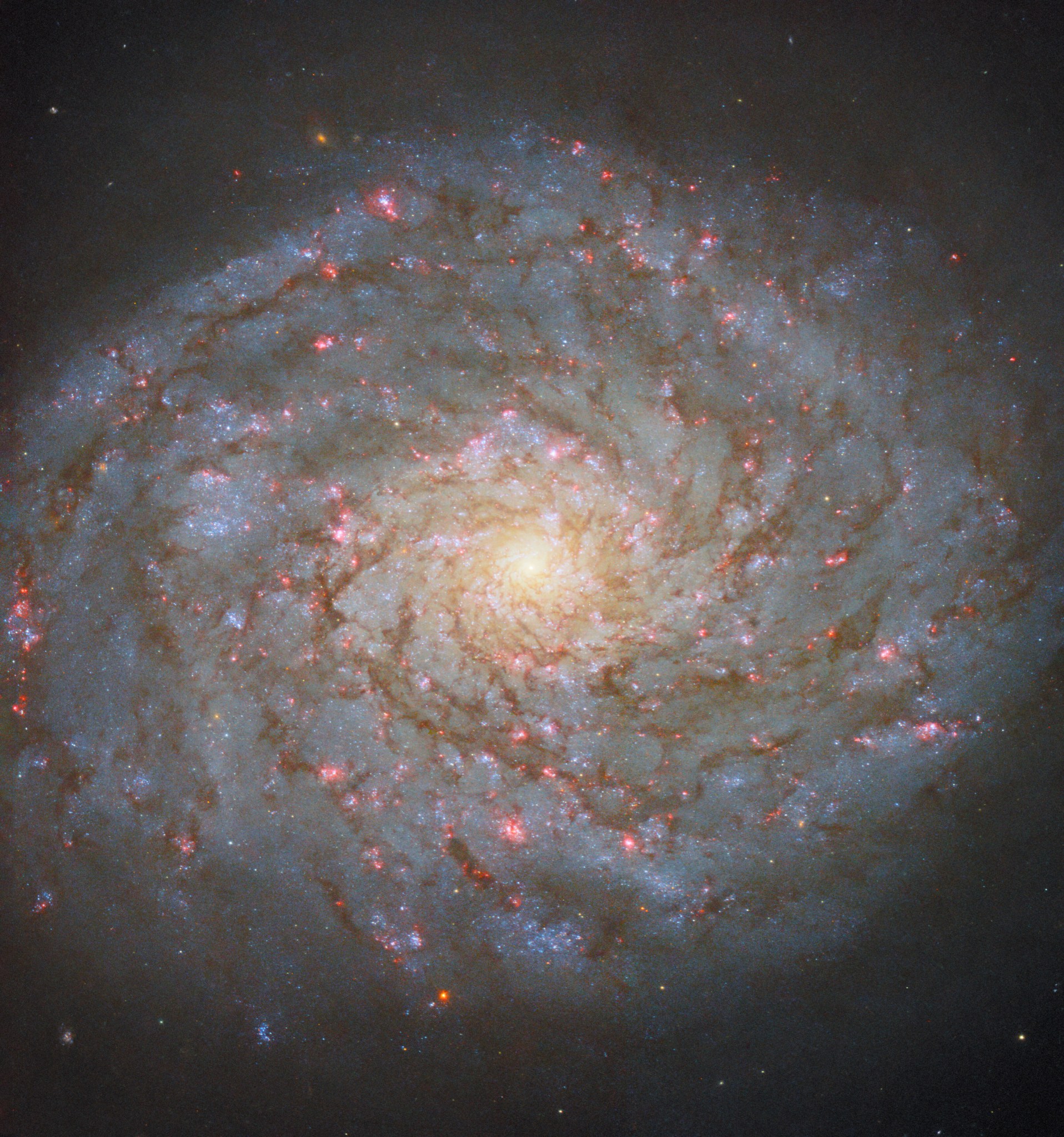This NASA/ESA Hubble Space Telescope image reveals the galaxy LEDA 857074. ESA/Hubble & NASA, I. Chilingari The subject of this NASA/ESA Hubble Space Telescope image is situated in the Perseus Cluster, also known as Abell 426, 320 million light-years from Earth. It’s a barred spiral galaxy known as MCG+07-07-072, seen here among a number of photobombing stars that are much closer to Earth than it is. MCG+07-07-072 has quite an unusual shape for a spiral galaxy, with thin arms emerging from the ends of its barred core to draw a near-circle around its…
Read MoreTag: Astrophysics Division
Hubble Spotlights a Supernova
2 min read Hubble Spotlights a Supernova This NASA/ESA Hubble Space Telescope image reveals the galaxy LEDA 857074. Credit: ESA/Hubble & NASA, R. J. Foley This NASA/ESA Hubble Space Telescope image features the galaxy LEDA 857074, located in the constellation Eridanus. LEDA 857074 is a barred spiral galaxy, with partially broken spiral arms. The image also captured a supernova, named SN 2022ADQZ, shining brightly on the right side of the galaxy’s bar. Several evolutionary paths can lead to a supernova explosion. One is the death of a supermassive star. When…
Read MoreHubble Studies a Potential Galactic Merger
3 min read Hubble Studies a Potential Galactic Merger This NASA/ESA Hubble Space Telescope image captures the dwarf irregular galaxy NGC 5238. ESA/Hubble & NASA, F. Annibali This NASA/ESA Hubble Space Telescope image features the dwarf irregular galaxy NGC 5238, located 14.5 million light-years from Earth in the constellation Canes Venatici. Its unexciting, blob-like appearance seems to resemble an oversized star cluster more than a classic image of a galaxy. Its lackluster appearance belies its complicated structure, which is the subject of a great deal of research. As the image…
Read MoreHubble Measures the Distance to a Supernova
3 min read Hubble Measures the Distance to a Supernova This NASA/ESA Hubble Space Telescope image features the galaxy NGC 3810. ESA/Hubble & NASA, D. Sand, R. J. Foley Measuring the distance to truly remote objects like galaxies, quasars, and galaxy clusters is a crucial task in astrophysics, particularly when it comes to studying the early universe, but it’s a difficult one to complete. We can only measure the distances to a few nearby objects like the Sun, planets, and some nearby stars directly. Beyond that, astronomers need to use…
Read MoreHubble Examines an Active Galaxy Near the Lion’s Heart
2 min read Hubble Examines an Active Galaxy Near the Lion’s Heart This NASA/ESA Hubble Space Telescope features the elliptical galaxy Messier 105. ESA/Hubble & NASA, C. Sarazin et al. It might appear featureless and unexciting at first glance, but NASA/ESA Hubble Space Telescope observations of this elliptical galaxy — known as Messier 105 — show that the stars near the galaxy’s center are moving very rapidly. Astronomers have concluded that these stars are zooming around a supermassive black hole with an estimated mass of 200 million Suns! This black…
Read MorePillars of Creation Star in New Visualization from NASA’s Hubble and Webb Telescopes
6 Min Read Pillars of Creation Star in New Visualization from NASA’s Hubble and Webb Telescopes A mosaic of visible-light (Hubble) and infrared-light (Webb) views from the same Pillars of Creation visualization frame. Credits: Greg Bacon, Ralf Crawford, Joseph DePasquale, Leah Hustak, Christian Nieves, Joseph Olmsted, Alyssa Pagan, and Frank Summers (STScI), NASA’s Universe of Learning Made famous in 1995 by NASA’s Hubble Space Telescope, the Pillars of Creation in the heart of the Eagle Nebula have captured imaginations worldwide with their arresting, ethereal beauty. Now, NASA has released a…
Read MoreNASA Releases Hubble Image Taken in New Pointing Mode
2 min read NASA Releases Hubble Image Taken in New Pointing Mode This NASA Hubble Space Telescope features the galaxy NGC 1546. NASA, ESA, STScI, David Thilker (JHU) NASA’s Hubble Space Telescope has taken its first new images since changing to an alternate operating mode that uses one gyro. The spacecraft returned to science operations June 14 after being offline for several weeks due to an issue with one of its gyroscopes (gyros), which help control and orient the telescope. This new image features NGC 1546, a nearby galaxy in…
Read MoreNASA to Change How It Points Hubble Space Telescope
3 min read NASA to Change How It Points Hubble Space Telescope This image of NASA’s Hubble Space Telescope was taken on May 19, 2009 after deployment during Servicing Mission 4. NASA After completing a series of tests and carefully considering the options, NASA announced Tuesday work is underway to transition its Hubble Space Telescope to operate using only one gyroscope (gyro). While the telescope went into safe mode May 24, where it now remains until work is complete, this change will enable Hubble to continue exploring the secrets of…
Read MoreNASA’s Hubble Temporarily Pauses Science
1 min read NASA’s Hubble Temporarily Pauses Science This image of NASA’s Hubble Space Telescope was taken on May 19, 2009 after deployment during Servicing Mission 4. NASA NASA’s Hubble Space Telescope entered safe mode May 24 due to an ongoing gyroscope (gyro) issue, suspending science operations. Hubble’s instruments are stable, and the telescope is in good health. The telescope automatically entered safe mode when one of its three gyroscopes gave faulty telemetry readings. Hubble’s gyros measure the telescope’s slew rates and are part of the system that determines and…
Read MoreHubble Captures a Bright Spiral in the Queen’s Hair
2 min read Hubble Captures a Bright Spiral in the Queen’s Hair This Hubble Space Telescope image showcases the bright spiral galaxy NGC 4689. ESA/Hubble & NASA, D. Thilker, J. Lee, and the PHANGS-HST Team This NASA/ESA Hubble Space Telescope image shows the jewel-bright spiral galaxy NGC 4689, which lies 54 million light-years from Earth in the constellation Coma Berenices. This constellation has the distinction of being the only one of the 88 constellations officially recognized by the International Astronomical Union (IAU) as one named after the historical figure, Queen…
Read More